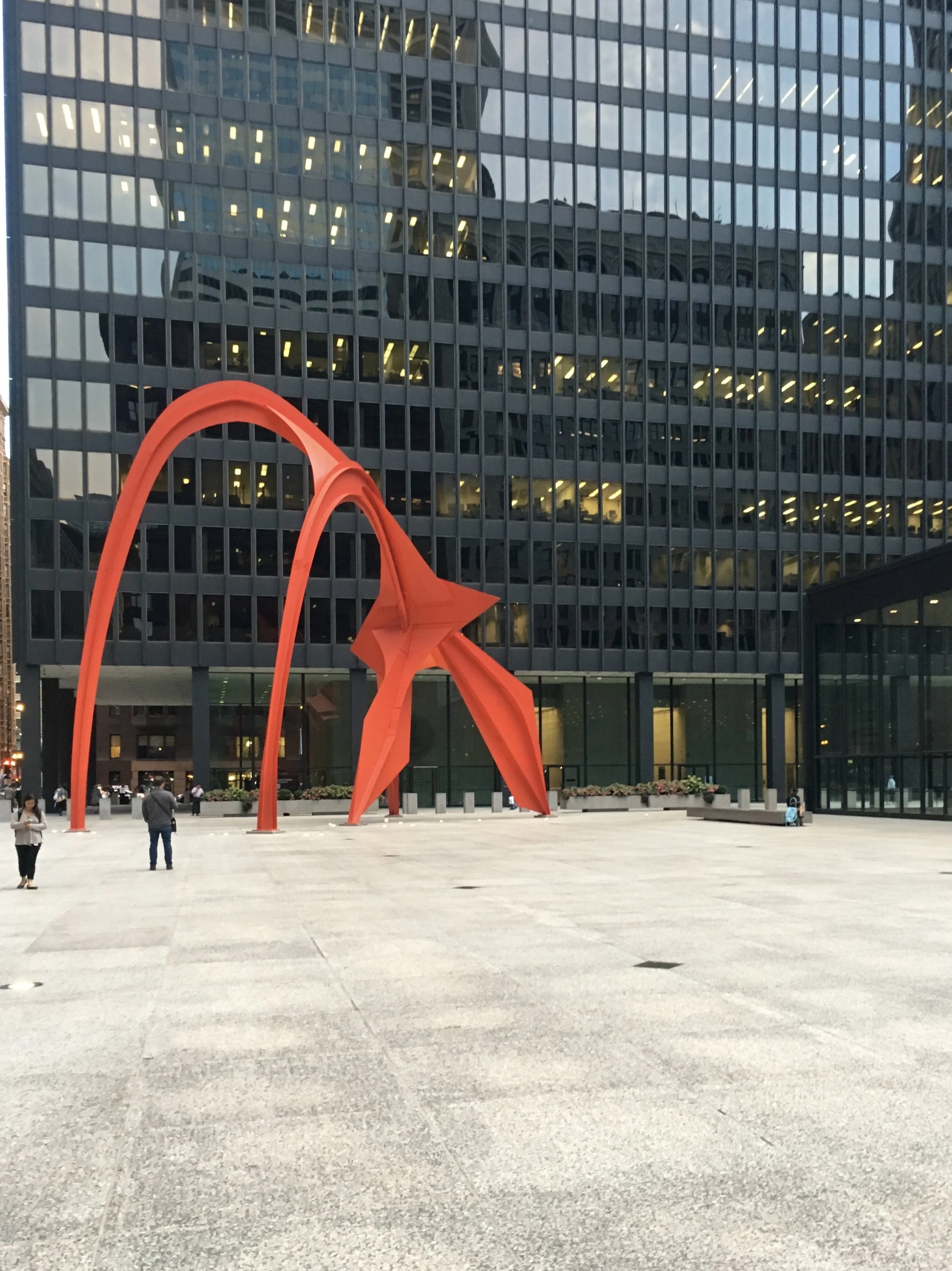Artist Corner - Calder
Alexander "Sandy" Calder (July 22, 1898 – November 11, 1976) was an American sculptor known both for his innovative mobiles, kinetic sculptures powered by motors or air currents that embrace chance in their aesthetic, his static "stabiles", and his monumental public sculptures.
This post is a sampling of the Calder stabiles and monumental public sculptures that I have seen in Los Angeles, Chicago, San Francisco and Dublin.
A separate post will be devoted to his smaller kinetic sculptures.
Four Arches, Bunker Hill (Los Angeles)
In 1973, this 63-foot tall (19 m) vermillion-colored public art sculpture Four Arches was installed on Bunker Hill, Los Angeles to serve as "a distinctive landmark". The plaza site was designed in tiers to maximize the sculpture's visual effects.
I’ve always been partial to Calder’s vermillion-colored sculptures as the joyful bright color stands pops against a blue sky.
Flamingo, Federal Plaza in Chicago
I took this photo of Flamingo when I visited Chicago to run the marathon in 2017.
From Wikipedia:
Flamingo weighs 50 tons, is composed of steel, and is vermillion in color. Calder gave the stabile its color, which has come to be called "Calder red", to offset it from the black and steel surroundings of nearby office buildings, including the Ludwig Mies van Dee Rohe-designed Kluczynski Federal Building.
The Kite that Never Flew at SFMOMA
The photo of this stabile was taken in front of the brick walls of the original Mario Botta–designed building, which debuted in 1995. Lucky for me that I happened to be at SFMOMA when there was the exhibit Scaling Up, which took a close look at the small-scale and surprisingly tactile beginnings of Calder’s most sizable works.
Cactus Provisoire
Calder’s ‘Cactus Provisoire’ sits at an off-centre position on the lawn of Fellows’ Square. The sculpture, created in 1967, was chosen for Fellows’ Square after Calder’s death in 1976.
The relatively modern building in the photo is the Trinity Long Room Hub By McCullough Mulvin Architects (2010)
A tall rectilinear form in stone clad with a broken pattern of incised granite slabs and deeply inset vertical windows, the building mimics the geometry of the adjacent Old Library.





